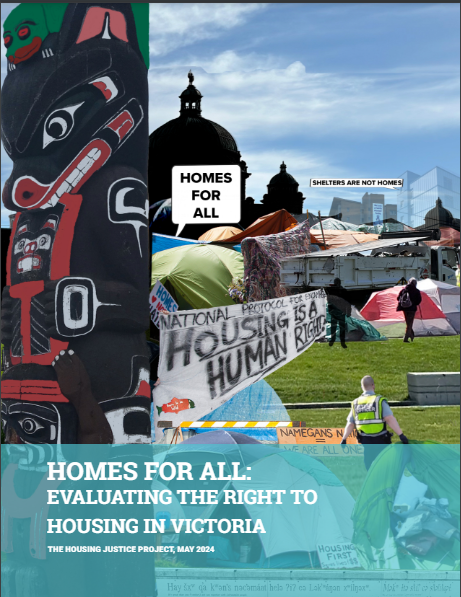Homelessness in Victoria: Out of Sight, Out of Mind
Homelessness in Victoria (Canada) is often invisible and too many government responses focus on keeping people out of sight and out of mind, rather than moving people into housing that meets human-rights standards.
The most recent Greater Victoria homeless count, also known as the Point in Time Count & Homeless Needs Survey, estimated there were 1,665 people in Greater Victoria experiencing homelessness [1]. This includes people who are unsheltered, in emergency shelters, couchsurfing, and in public institutions like treatment programs and transitional programs.
Not everyone who is couch-surfing or in a transition program is considered homeless. People residing in temporary situations are considered homeless or at risk of homelessness when it is unlikely or impossible to acquire a secure tenure.
Homeless counts are estimates and known undercounts. Many people are hard to find if they are couch-surfing or living in vehicles. Some are intentionally avoiding homeless-specific services and keeping out of the public eye. This is especially true for women, girls and gender diverse people who avoid homeless services to avoid violence, or loss of their children [8]. Homelessness may be hidden out of sight by individual choice or by government-led responses that warehouse people for years in shelters.
Further, many people are at risk of homelessness and paying too much for housing, or struggling to make ends meet. In the Capital Regional District, 32 per cent of households are living in housing that costs more than 30 per cent of their income, is not suitable, or is in need of major repairs [9]. For these households, housing is unaffordable and for some the housing is unsuitable and inadequate.

